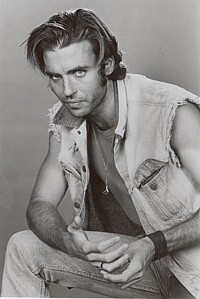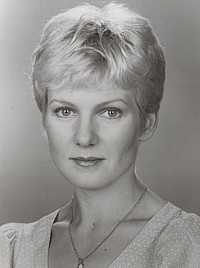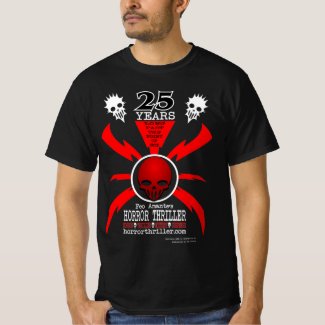 |
 |
Article by |
The PSYCHO Sequels
By James Futch
Norman Bates is back to normal, but Mother is off her rocker again
| PSYCHO MOVIE REVIEW |
| PSYCHO II MOVIE REVIEW |
| PSYCHO III MOVIE REVIEW |
John McCarty, eminent film writer, provided the perfect synopsis for the third film in the PSYCHO series, "If PSYCHO II was about Norman's character and his attempt to hold on to the nominal sanity afforded him by twenty-two years of psychiatric treatment, PSYCHO III is Norman's own battle to crawl out of the pit of madness into which he had returned by the end of the second film."
PSYCHO III, released in 1986, picked up the story a few weeks later.
The motel is back in business, with a "help wanted" sign on the office window. Norman passes the empty hours alone. Inside the house, he sits at the kitchen table, upon which are the instruments of his hobby, "stuffing things". As he packs sawdust into the carcass of a little bird, he sighs heavily and it is in this sigh that we get the clearest indication of how awfully lonely it is to be Norman Bates. Perkins can do it all with the barest of a sigh or twitch of the lips.
|
The action begins when a guitar playing wanna-be rock star named Duane Duke (Jeff Fahey: THE LAWNMOWER MAN), shows up and asks about the "help wanted" sign. The scene in which Norman interviews Duane ("friends just call me 'Duke") for the job is a lot of fun. Duke, with his longish hair, biker attire, and 5 o'clock shadow, is the antithesis to Norman Bates, who is still dressed quite conservatively after all these years ("conservative clothes never go out of style"). The job is for "general assistant" but Norman awards Duke the higher rank of "assistant manager" with this line of reasoning:
"Well, I'm the manager and you'd be my assistant, so I guess you'd be assistant manager."
|
He then meets Maureen Coyle (Diana Scarwid: STRANGE INVADERS), and actually experiences something close to a normal relationship. Early in the film the young woman is close taking her final vows to become a nun. Struggling with her faith, and contemplating suicide, she inadvertently causes the death of one of the elder nuns, who falls from the bell tower at the convent in a scene that is a sly nod to VERTIGO. She leaves the convent with only a suitcase.
Naturally, the wayward nun ends up at the motel and her scenes with Norman are among the most touching in the film. When she asks Norman why he is so kind to her, he tells her:
" . . . people should look out for each other don't you think? I mean, we sometimes get lost, but if there had only been someone looking out for us - to help us understand - maybe we wouldn't do some of the sad, awful things we do."
We all know what sad and awful things Norman has done. The thing is, he knows it too. And in that lies the heart and soul of this terribly overlooked film.
 ROBERTA MAXWELL and ANTHONY PERKINS |
As Norman and Maureen grow closer, a reporter named Tracey Venable (Roberta Maxwell: THE CHANGELING) starts snooping around the motel. Norman juggles his budding romance with his duties as motel manager, ice machine repairman, and mama's little helper. And all this while Fairvale and Central's football teams party down in the motel. With a pressure cooker situation like this, it's no surprise the murders start up again.
Old Friends and New Collaborators
Once again, Hilton Green wore the producer's hat. After having been assistant director on PSYCHO, and producer of PSYCHO II, Green was familiar with the PSYCHO mythology and remained faithful to it. The primary filming was done on the Universal Studios sound stages and the Bates motel and house on the hill, comfortably residing in its present location on the Universal back lot.
Writing the score was the task of Carter Burwell, the inspired composer to RAISING ARIZONA, MILLER'S CROSSING, and BEING JOHN MALKOVICH. While much of the soundtrack is original material Burwell adapted Jerry Goldsmith's innocent and melancholy refrain from PSYCHO II and arranged it into an even more haunting piece of music for PSYCHO III's main theme. The score is minimalist compared to Goldsmith's lush orchestral sweeps, with a more John Carpenter style synthesized sound. Due to the film series' repeated Catholic symbolism, much of the score employs, with chilling effect, the ghostly sounds of religious choirs, chanting in Latin.
Charles Edward Pogue penned the excellent remake for 20th Century Fox's THE FLY, starring Jeff Goldblum. Universal execs liked the film and contacted Pogue about writing the script for a proposed PSYCHO III. Like his screenplay for THE FLY remake, Pogue did not disappoint with PSYCHO III.
And it was the strength of that screenplay that brought Anthony Perkins back a third time as the legendary Norman Bates. And as the director of the film Anthony Perkins unleashed his own ideas about Norman Bates.
The New Mrs. Bates
In 1986, Perkins recalled, "The script was sent to me as an acting job and as I finished reading it, I said 'I want to direct this.' It was a beautifully written screenplay."
He approached the studio and offered his services as an actor and ended up as both actor and director. In "Osgood and Anthony Perkins: A Comprehensive History" by Laura Kay Palmer, Perkins tells it like this:
"We were discussing financial terms for the acting and I said, "By the way, I'll throw the directing in for free. You can have me for X dollars as an actor or as a director and actor for the same amount." There are too many meetings, too many deals, too many pages in a contract in the movie business. I thought, 'This is easy. You can put it in one sentence.'"

The execs agreed and the neon sign in front of the motel lit up for the third time. The Bates Motel was back in business and this time, Norman Bates himself was directing the show.
John McCarty wrote in The Modern Horror Film, "With Perkins taking over as director of PSYCHO III, it was only natural that the emphasis would shift entirely to the creation of a wholly sympathetic character. In so doing, Perkins created an even fresher and more pertinent film than the one that had preceded it."
The film is by far the best looking of the PSYCHO sequels, bar none.
"Perkins…[has] given the film a deep and striking visual style to match his daring thematic style," declared Samir Roy, an Internet expert on the film.
Indeed, Perkins allows the camera to linger during the establishing shots around the motel grounds and the exterior of the famous house. A battered paperback copy of IN THE BELLY OF THE BEAST (about the release of supposedly rehabilitated killers*) lies discarded in the yellowed grass. Tumbleweeds scrabble across the sand. Little birds eat from the birdfeeder and begin to convulse and die.
And the colors and composition of the shots are absolutely glorious.
"Perkins [has] an adroit sense of lighting patterns, knowing just what type and color of light to use in each scene; sometimes chiaroscuro in a film noirish sense and sometimes wild and vibrant…" wrote Samir Roy of the film's rich burgundies, muted ochres, and deep blues, "in the sequence [when] he discovers the body of a young woman in the parlor bathroom…half his face masked in darkness the other half is lit in such a way that it exposes all his wrinkles and signs of aging in a green flesh which makes him appear monstrous yet deeply sympathetic…"
From the Victorian décor choked interior of the Bates mansion to the pornographic world of Duane Duke in Cabin 12, the lighting remains situated to drape the sets in creepy shadows. And Perkins employs some neat sleight of hand in a few transitional scenes. Samir Roy explained it this way:
"[Perkins had] different sets built together, connected by either a door or a hall so that instead of dissolving into the next scene, or just cutting straight to it, he segued into scenes from other scenes in different sets by merely walking through the door or down the hall, and in one instance moving into a close up of a television in a bar, then with the camera pulling back, without cutting, we are suddenly in Norman's parlor."
That's the best explanation of it I've seen. The technique is simple, but very effective and worth the effort.
Very few scenes do not come off perfectly and that includes the many slayings. The body count in PSYCHO III is much higher than its predecessors, and in some cases, disturbingly graphic.
Perkins defended the elevated graphic violence in PSYCHO III, "[The strength] of the PSYCHO pictures is that they don't deal with senseless murders. The PSYCHO stories are real tragedies first, horror films second, and we are not just doing stories of murders surrounded with a little plot. That would be absolutely unfair to the PSYCHO stories, the narrative of PSYCHO, the whole PSYCHO mythology. It has very little to do with murder. It has more to do with the excesses of love rather than hateful and evil impulses."
While directing PSYCHO III, Perkins relied heavily on his vast experience starring and directing on the stage as well as his familiarity with the character, all of which were an asset to the direction.
The cast and crew felt they were in able hands under Perkins's direction and remember him fondly. One of the production crew said, "Tony may have been a first time director, but he came in with a background [of ] 35 years on stage, in motion pictures and television, as an actor, stage director, and a writer."
"He had a great rapport with everyone," said script supervisor Betty Abbott Griffin, "He asked questions and you participated with him."
Costar Diana Scarwid (Maureen Coyle in the film) said of Perkins, "He's a great thinker and listener, which makes him a strong, sensitive director."
Roberta Maxwell, who had worked with Perkins in "Equus" a decade before, said of Perkins's direction, "Extraordinary…what you [brought] to the set that day - your mood, the texture - he [incorporated] into the scene."
Veteran producer and longtime Hitchcock associate Hilton Green gave Anthony Perkins the most praise, "I can't say enough about how impressive Tony has been. He has a great knack with the camera and with people. I believe a star has been born in the directing ranks."
After the movie was released, Roger Ebert, Chicago Suntimes Movie Critic, observed, "I was surprised by what a good job Perkins does [directing]. Any movie named "Psycho III" is going to be compared to the Hitchcock original, but Perkins isn't an imitator. He has his own agenda. He has lived with Norman Bates all these years, and he has some ideas about him, and although the movie doesn't apologize for Norman, it does pity him. For the first time, I was able to see that the true horror in the "Psycho" movies isn't what Norman does - but the fact that he is compelled to do it."
Twelve Cabins, Twelve Vacancies
Once again, new travelers trek down the old highway and end up at the Bates Motel. The first to arrive is the itinerant rock singer Duane Duke ("friends call me 'Duke'") played by the piercing blue-eyed Jeff Fahey. In PSYCHO III, the opportunistic Duke attempts to blackmail Norman with his knowledge of Mother. Jeff Fahey reveals, "Duke is not a nice person, but he's not vicious. He's just a little offbeat, a little out of step."
The next traveler to miss the main highway exit is Diana Scarwid as Maureen Coyle, the runaway nun who empathizes with Norman Bates and even falls in love with him. The role is intense and heartfelt.
"To me, PSYCHO III is a psychological thriller about the darkness and light of the human mind and the walls that we erect around us, which threaten to destroy our humanity," says Scarwid. In PSYCHO III, the innocent Maureen falls in love with a deadly psychopath. Of her character's naiveté, Scarwid said, "She's too full of fear and pain, like Norman, to function in the world. Through Norman, Maureen finds that special place of peace within herself."
Roberta Maxwell plays Tracy Venable, a snooping reporter working on a story about the insanity plea as a defense in murder trials. Though Sheriff Hunt (the valuable Hugh Gillin) and Norman's erstwhile boss Ralph Statler (Robert Alan Browne) both believe that Norman's paid the price to society and should be left alone ("Hey when he worked here, he was always on time, and he did his job," asserted Mr. Statler defensively to the questioning reporter), Venable isn't convinced and pays a call to the Bates Motel.
"When my name came up at a casting meeting, [Tony] asked to see me," said Maxwell on landing the part of Tracy Venable, "It was one of those special meetings - immediate rapport; he was communicative and positive."
As the legendary Norman Bates, Perkins actually surpasses his first performance back in 1960, taking advantage of the fact that this third incarnation of Norman is more complex than ever. He is aware now of his emotional duality but helpless to stop the urges that drive him to kill. Notice the poignant scene where he embraces (and desires) Maureen while visibly struggling against the "Mother" half, who wishes only to kill the poor girl with a kitchen knife. Perkins pulls it off flawlessly.
In his review, Roger Ebert described another effective scene in PSYCHO III, where "[Perkins] walks down the steps and along the front of the Bates Motel toward his rendezvous, the camera tracks along with him, one unbroken shot, and his face is a twitching mask of fear… the face belongs to Anthony Perkins, who is better than any other actor at reflecting the demons within."
With tour de force acting, Perkins launched the Norman Bates character beyond the realm of pop culture and into the kingdom of legend. Not until THE SILENCE OF THE LAMBS would a psychopathic killer become such a household word. And just as nobody but Anthony Hopkins would do as Hannibal Lecter, "Possibly no actor could have matched the Perkins performance, which is one of the unique creations in the cinema," noted the insightful Ebert in his scathing review of Gus Van Sant's 1998 shot-by-shot remake of the Hitchcock original.
But as John McCarty wrote in THE MODERN HORROR FILM, Perkins had the added advantage of playing a character that was "admittedly well written".
Perkins commented that when market research was done for PSYCHO II, the results showed that ninety percent of Americans over the age of twelve knew who Norman Bates was. Perkins was astounded.
"Ninety percent! They might not have seen the [PSYCHO] but they'd read Mad Magazine, or they'd seen a spoof of it on SATURDAY NIGHT LIVE, or they heard their parents talking about it - it's part of the American fabric," Perkins said in C.V. Drake's Cinefantastique article.
Perkins was also heard to say a few times, in interviews and conventions, "I still refer to Norman as the Hamlet of horror roles. He's an exceedingly challenging, provocative, and complex character. Not your standard guy, Norman Bates."
No, far from it.
PAGE 6: And once
again, the house stands empty… ![]()
PSYCHO, PSYCHO II, and PSYCHO III photos copyright 1983 and 1985 Universal Studios, Inc. All rights reserved. May be reprinted for newspapers and other periodicals.
This article copyright 2002 E.C.McMullen Jr.

|
| HERE WEAR ONE OF MINE | |
| YOU MIGHT ALSO ENJOY (Sub-Section: PSYCHO and Mother's Children) |
||
 |
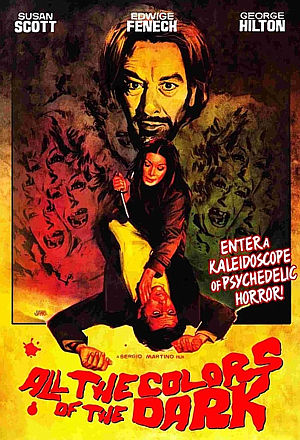 |
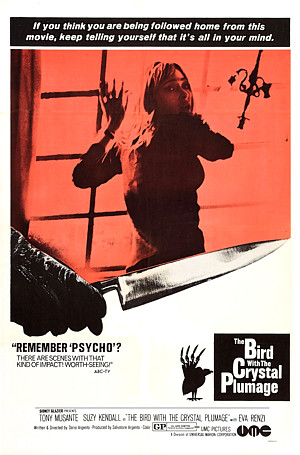 |
| PSYCHO III MOVIE REVIEW |
ALL THE COLORS OF THE DARK MOVIE REVIEW |
THE BIRD WITH THE CRYSTAL PLUMMAGE MOVIE REVIEW |
FEO AMANTE'S HORROR THRILLERCreated by:E.C.McMullen Jr. FOLLOW ME @ |
| Amazon |
| ECMJr |
| Feo Blog |
| IMDb |
| Stage32 |
| YouTube |
| Zazzle Shop |
